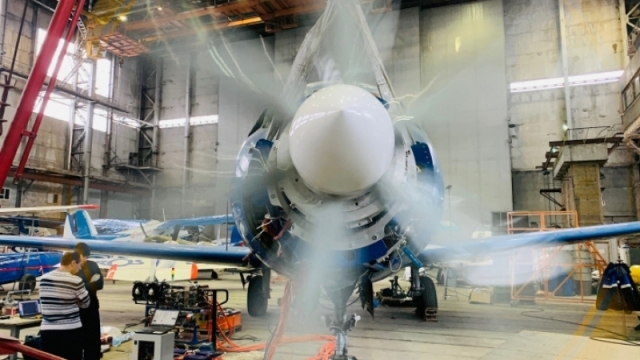TSAMTO, September 1. Tests of a hybrid power plant based on a gas turbine engine and a superconducting electric motor at the Yak-40LL flying laboratory will be completed in 2022.
This was announced in an interview with RIA Novosti by Mikhail Gordin, General Director of the P. I. Baranov CIAM.
Earlier it was reported that Russia was the first in the world to lift an airplane with superconductor technologies implemented in the engine. The demonstration flight of the aircraft was held as part of the MAKS-2021 air show.
"All the plans are reflected in the test program, which will last until the first half of 2022. Of course, the deadlines are not tight and depend on what difficulties we will face during the flights. As soon as everything planned is completed, we will dismantle all the equipment from the flying laboratory and form a plan for the further use of the aircraft," M. Gordin told RIA Novosti.
Currently, the flying laboratory has returned from Zhukovsky, where MAKS-2021 was held, to Novosibirsk, where it will continue flight tests. CIAM together with the S. A. Chaplygin SibNIA (CIAM is the lead contractor of the project, SibNIA is responsible for the flying laboratory, both organizations are part of the N.E. Zhukovsky Institute) will test the operation of the aircraft and engine systems under different flight modes, under different vibration and overload conditions. "It is necessary to understand how the power generation capacity changes at different heights," M. Gordin said.
He clarified that this hybrid installation will not find application on any aircraft, but was created only for testing and testing technologies.
Tests of the hybrid installation as part of the aircraft began in February in Novosibirsk. For flight tests, one of the three Yak-40 engines located in the tail section was replaced with a turboshaft gas turbine engine with an electric generator developed by the P. I. Baranov CIAM together with the Ufa Aviation Technical University, and an electric motor using the effect of high-temperature superconductivity and a cryogenic system was installed in the" nose " of the flying laboratory, which was developed by SuperOx CJSC by order of the Advanced Research Foundation, RIA Novosti reports.

